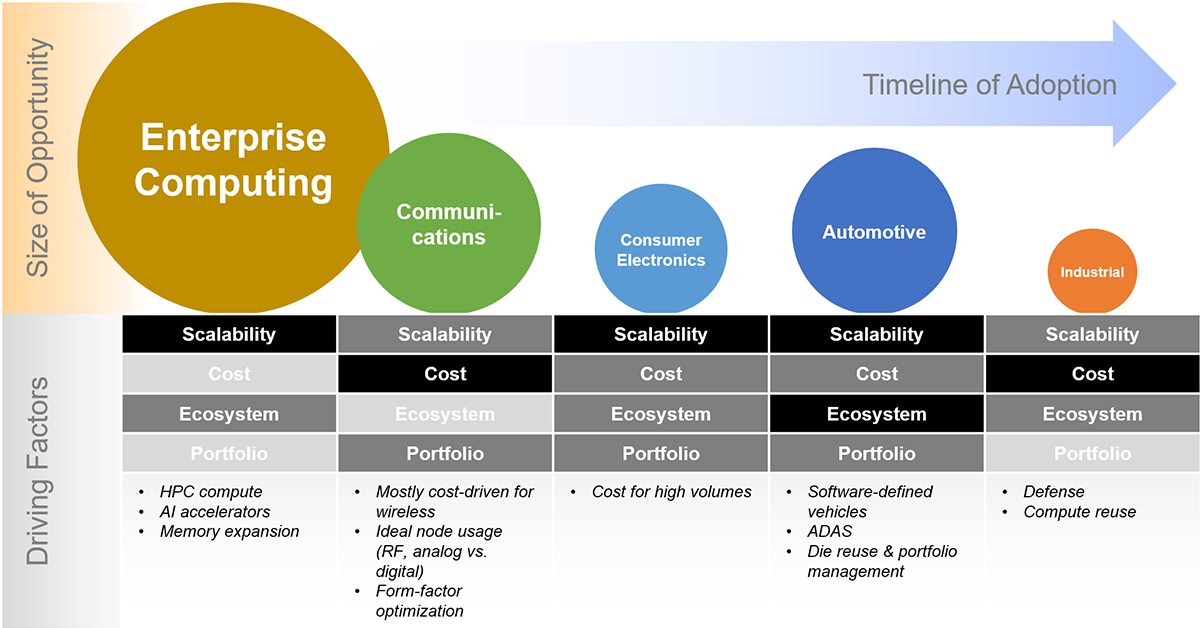EDN: The chiplet universe is coming: What’s in it for you?
by On Feb 21, 2024
There’s a lot of talk and excitement about chiplets these days, but there’s also a lot of confusion. What is available today? What should I expect in terms of interoperability? Is the promise of an emerging ecosystem real? More fundamentally, developers of high-end systems-on-chip (SoCs) need to consider a central question: “What’s in it for me?” The answer, unsurprisingly, varies depending on the type of application and the target market for these devices.
For the last few years, I have been closely monitoring the multi-die market, and I’ve been talking to a wide variety of players ranging from chip designers to chip manufacturers to end users of our system IP product offering. Although commentators and stakeholders accurately describe key benefits of chiplet technology, I’ve observed that these descriptions are rarely comprehensive and often lack structure.

Here is an outline of chiplet driving factors and size of opportunity per vertical Source: Arteris
As a result, I felt the need to identify common themes, reflect on their importance for future deployment and map them on the key industry verticals. This blog aims to summarize these insights in a diagram (see figure above), with the hope that it is useful to you.
1. Scalability: The key to meeting diverse computing demands
Scalability stands at the forefront of the chiplet revolution. Traditional monolithic chip designs face physical and economic limits as they approach the boundaries of Moore’s Law. Chiplets, however, offer a modular approach. By combining smaller, discrete components or “chiplets,” manufacturers can create larger, more powerful processors.
This modular design allows for the easy scaling of performance and functionality to meet the specific needs of various applications. This is what drove the early adoption of the technology by pioneering companies in the enterprise compute vertical. Today, it also attracts players in the communications and automotive industries, which also crave higher computing power, particularly for AI applications.
